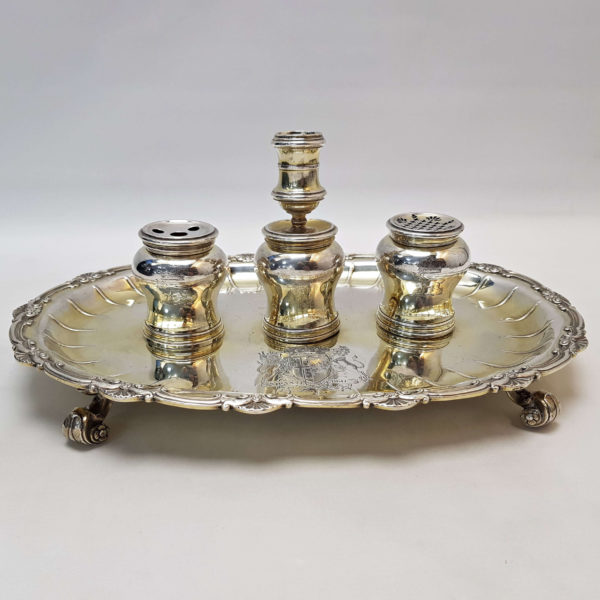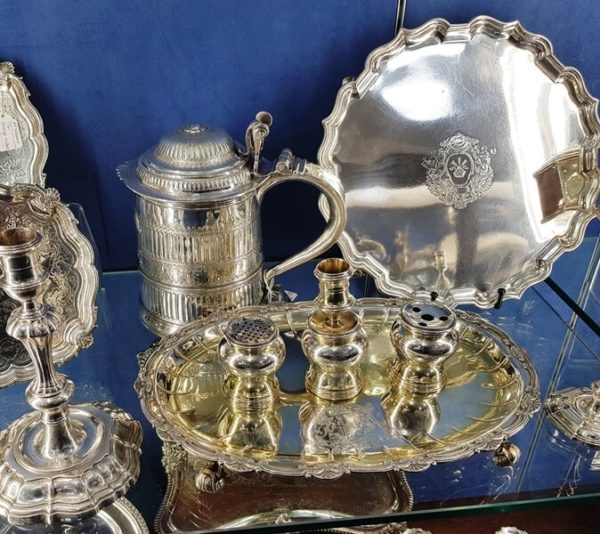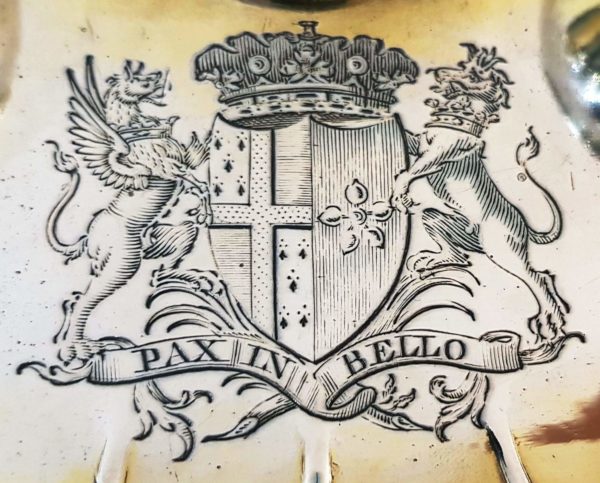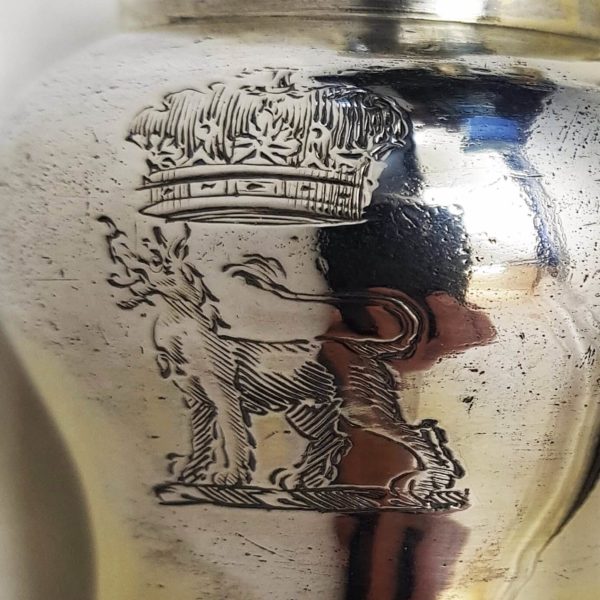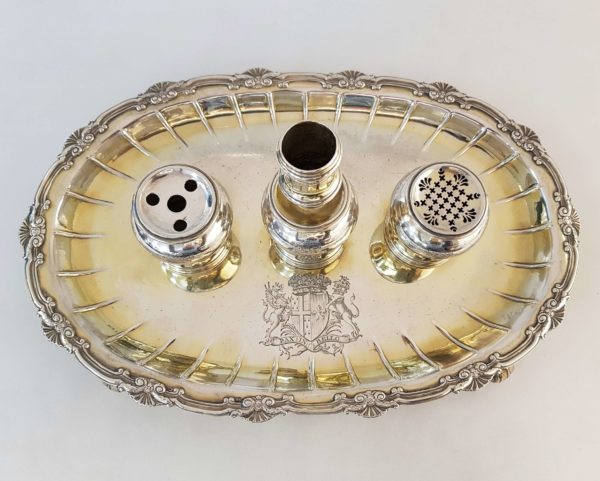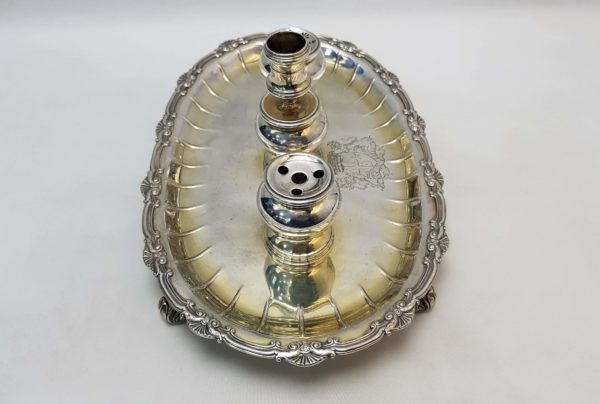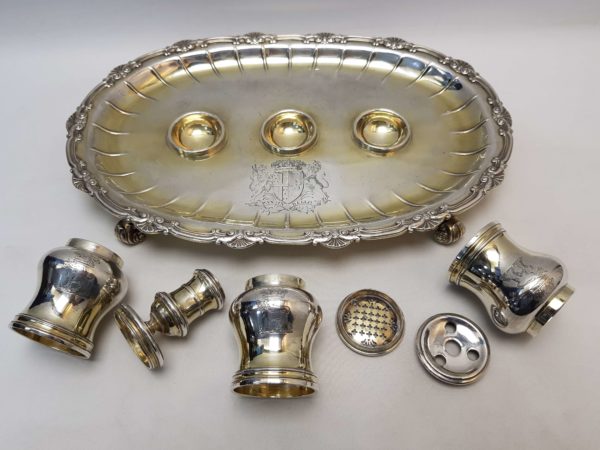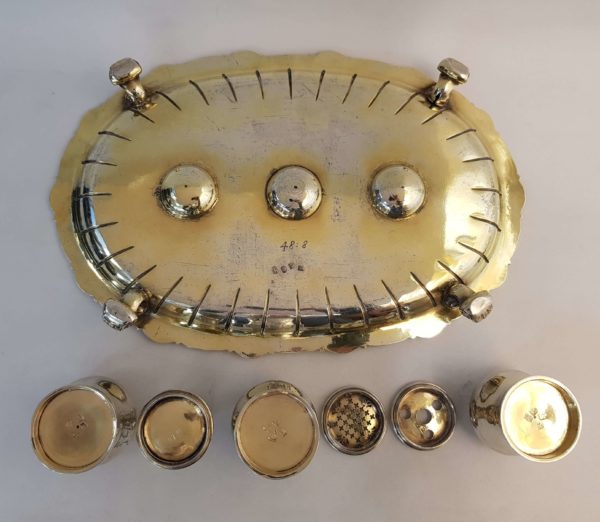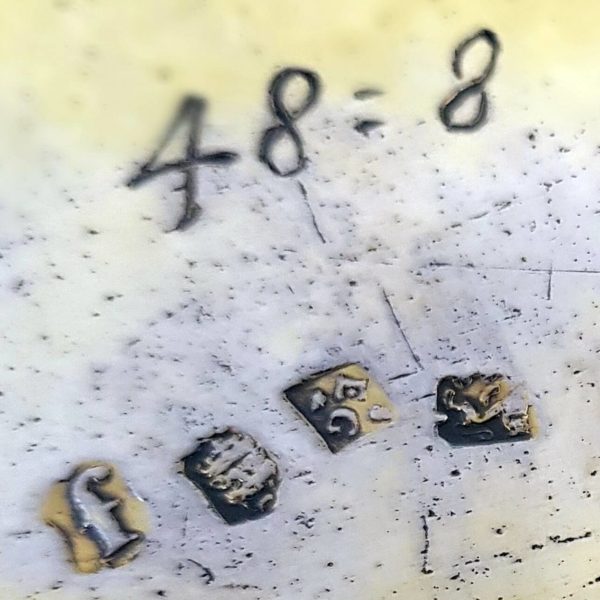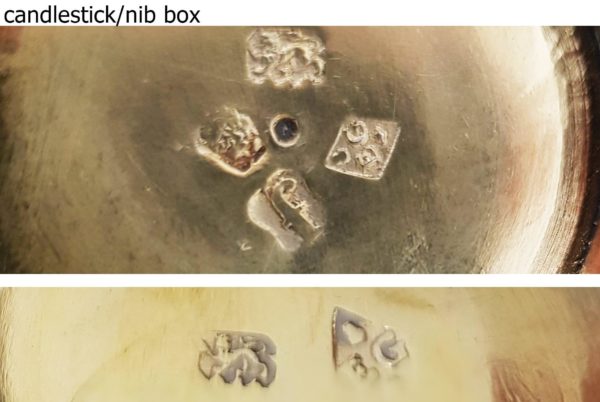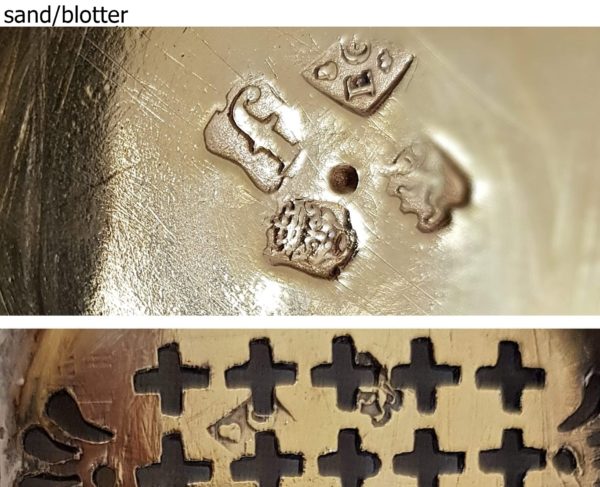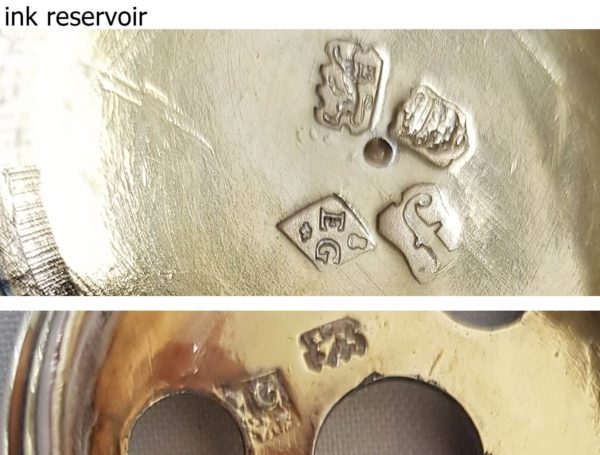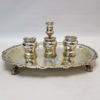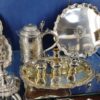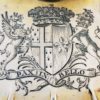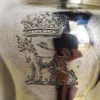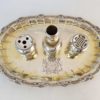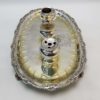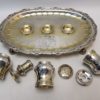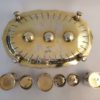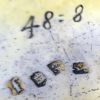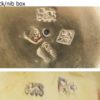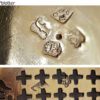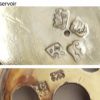George II Antique Silver Inkstand
SOLD
Stock: 10209
Date: 1741
Maker: Elizabeth Godfrey
Country: England
An exceptional early English silver inkstand of oval form with a cast shell border and raised on four cast scroll...
Description
Description
An exceptional early English silver inkstand of oval form with a cast shell border and raised on four cast scroll feet. Gilt finish. Good gauge silver and heavy weight. To the top are two cylindrical containers for ink and sand and a detachable candlestick mounted on a circular box. Hand engraved to the top with a coat of arms and motto “Pax in Bello” for the Osborne family; the two pots and taperstick all with a matching crest.
Weight 1485 grams, 47.7 troy ounces.
Height 13.25cm. Length 34.4cm. Width 22.5cm.
London 1741.
Maker Eliza Godfrey.
Sterling silver.
The inkstand has a charming faded colour with wear to the original gilt.
Marks. Stamped with a full set of English silver hallmarks below the stand and underneath the three pots; the two lids and candlestick with lion and maker’s mark only. All matching.
Arms. The motto “Pax in Bello” translates as “Peace in War”. The arms are for the Osborne baronetcy of Kiveton, County of York and are likely to be for Thomas Osborne, 4th Duke of Leeds (6 November 1713 – 23 March 1789), born Earl of Danby, became Marquess of Carmarthen in 1729 and Duke in 1731. Osborne was a British peer, politician and judge.
Literature. The inkstand did not enter into common household use until the 18th century. The main requirement was a container for ink and another for sand (or pounce) which was used for drying the ink. Also required was a space to put quills. Some inkstands also incorporated a taper stick for melting sealing wax or even a bell.
Condition
The inkstand is in very good condition with moderate wear commensurate with age. Wear to the gilt. The engravings still retain good definition. All complete, original and matching.
Maker Information
Maker: Elizabeth Godfrey
Eliza (c.1700-1771) didn’t have a formal apprenticeship, instead she must have learnt her trade as a child in the family’s London workshop belonging to her father Simon Pantin (1666-1733). Pantin was a leading Huguenot goldsmith with a prestigious clientele and examples of his fine work can be seen in major museums and collections worldwide. Eliza’s marriage in 1721 to London goldsmith Abraham Buteaux (1698-1731) will have allowed her to continue her craft skills. Abraham was her father’s Huguenot nephew and godson, and was apprenticed to him in 1711, free in 1718. In 1721 Abraham entered 2 marks (Sterling and New Standard) and the married couple set up business in Green St, moving to Norris St in 1731. Just a few short months later Abraham died and Eliza, 3 months pregnant at the time, continued the business and entered her own widow’s mark as Elizabeth Buteux. The Buteux’s work bears similarity to that of Simon Pantin – mainly plain cups, other hollow-ware and salvers. The following year in 1732 Eliza, 7 months pregnant with Abraham’s child, married Benjamin Godfrey (1699-1741), a London jeweller with a neighbouring shop in Norris Street. Benjamin, born to an affluent English family, continued both the jeweller’s shop and the silversmith’s premises in Norris St. Despite having no experience of silvermaking he entered marks at Goldsmiths Hall as largeworker, presumably for use by Eliza. 1st mark in 1732, 2nd and 3rd marks in 1739. The Godfreys’ work displays strong Huguenot influences in design and fine execution, their later works incorporating rococo designs. Just as one would expect from a family background such as Eliza’s. When Benjamin died in 1741 Eliza entered her second widow’s mark as Elizabeth Godfrey. She remained active until at least 1766 and her work was known for its high quality and sophisticated style. Her trade card described herself as “Goldsmith, Silversmith and Jeweller to the Duke of Cumberland” and her success is evident by the considerable quality and quantity of her surviving work. Eliza had 10 children of whom 5 reached adulthood. Of these, only Panton Betew (1723-1799) worked in the industry as a silver and art dealer A significant number of strong and powerful female silversmiths achieved successful careers during the 18th century, a time when women enjoyed very few rights, especially in a male dominated industry. The Goldsmith’s Company records 63 women silversmiths working between 1697 and the Victorian era. biography extracted from Sandra Robinson's "Simon Pantin & His Children"
Our Guarantee
Customer satisfaction is our primary concern
All silverware on our website is checked thoroughly prior to offering it for sale and every product listing contains a condition report and details of the silver hallmarks.
All items offered on our website include:
- Free Shipping Worldwide
- Tracked and Insured
- 14 day no quibble money back guarantee
- We are accredited members of LAPADA and conform to their strict professional standards
- We dispatch 1-3 days after receiving cleared payments
More detailed information about deliveries, returns and how to pay is available in the Help section at the bottom of this page.
